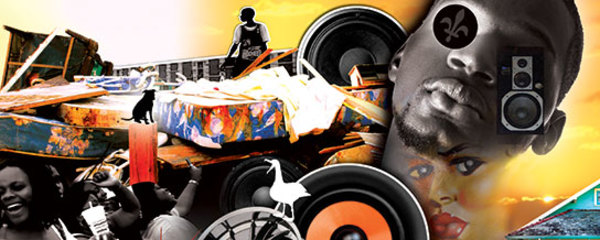What Is It? Bounce
While it developed concurrently with Miami bass and Memphis buck, no regional sound has influenced […]
What Is It? Bounce
While it developed concurrently with Miami bass and Memphis buck, no regional sound has influenced […]

While it developed concurrently with Miami bass and Memphis buck, no regional sound has influenced the slang and styles of the Dirty South more than New Orleans bounce music.
Mardi Gras Indian chants and early hip-hop’s call-and-response routines equally inform the swinging, uptempo hip-hop offshoot, which almost invariably features sample elements of the Showboys’ “Drag Rap” (a.k.a. “Triggerman”) and Derek B.’s “Rock the Beat” (known in New Orleans as “Brown Beat”), along with shout-outs to New Orleans’ wards and projects.
But while some elements of bounce–mainly crude lyrics–can be found in early releases by Warren Mayes and Bustdown, Crescent City rappers generally followed national hip-hop trends until 1991, when MC T Tucker and DJ Irv recorded “Where Dey At?” for a cassette-only release known as the “Red Tape.”
Based around repetitive chants (“Shake that ass like a saltshaker!”), “Where Dey At?” was the first studio recording to combine the inclusive energy of the city’s block parties and all-night clubs with the propulsive “Triggerman” beat.
“We’d been using ‘Triggerman’ since it came out, chopping that beat, getting gangster with it, dancing with it,” explains veteran bounce artist and special-ed teacher DJ Jubilee. “But Tucker took that sound and ‘rawed’ it with uncut, streetwise lyrics.”
DJ Jimi’s “(The Original) Where They At?” became the first bounce record released nationally, and UNLV and Juvenile solidified bounce’s nursery-rhyme flow on “Another Bitch” and “Bounce for the Juvenile,” respectively. In 1993, Jubilee added the last piece to the puzzle by turning popular dances from the high-school socials he was DJing into fodder for “Do the Jubilee All,” a G-rated anthem that allowed X-rated themes to follow.
As New Orleans rappers like Baby, Master P, and Juvenile (who lifted the hook for “Back That Azz Up” from Jubilee) broke nationally in the late ’90s, bounce declined in popularity before gaining a second wind with the unlikely emergence of cross-dressing “sissy” rappers like Katey Red and Big Freedia several years later. “Their music transcends the boundaries of gay and straight, which speaks to the uniqueness of New Orleans and also that bounce has always had a larger female market,” says Matt Miller, director of the bounce documentary Ya Heard Me? “The music’s in conversation with the audience. It’s not about talking about yourself or politics, even though there’s all sorts of individual spins put on it. The voice is exhortational.”
Shot between 2002 and 2007, Ya Heard Me? provides glimpses of the rich scene both before and after Hurricane Katrina. But while the later scenes are depressing, recent developments (bounce nights sprouting up in Atlanta and Dallas; the rise of a new generation of artists like Nake Niggidy, Peecachoo and Gotty Boi Chris, Beyonce’s bounce-inspired “Get Me Bodied”) suggest that the music will bounce back from the disaster.

